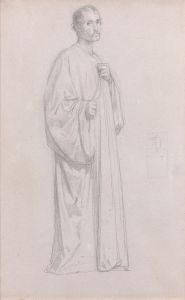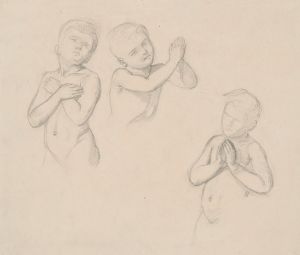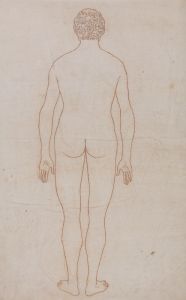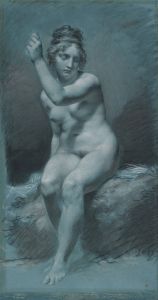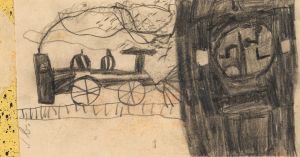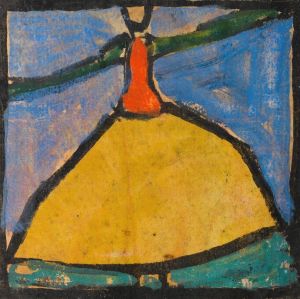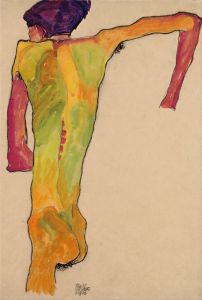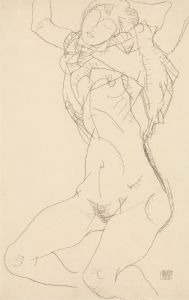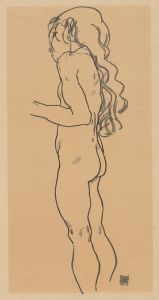
Zwei Stehende Weibliche Halbakte
A hand-painted replica of Egon Schiele’s masterpiece Zwei Stehende Weibliche Halbakte, meticulously crafted by professional artists to capture the true essence of the original. Each piece is created with museum-quality canvas and rare mineral pigments, carefully painted by experienced artists with delicate brushstrokes and rich, layered colors to perfectly recreate the texture of the original artwork. Unlike machine-printed reproductions, this hand-painted version brings the painting to life, infused with the artist’s emotions and skill in every stroke. Whether for personal collection or home decoration, it instantly elevates the artistic atmosphere of any space.
Egon Schiele, an Austrian painter known for his distinctive style and provocative subject matter, created the artwork "Zwei Stehende Weibliche Halbakte" (Two Standing Female Semi-Nudes) in 1913. Schiele was a protégé of Gustav Klimt and a major figurative painter of the early 20th century. His work is noted for its intensity and raw sexuality, and he is often associated with the Expressionist movement.
"Zwei Stehende Weibliche Halbakte" exemplifies Schiele's exploration of the human form and his interest in capturing the psychological depth of his subjects. The painting features two female figures, depicted in a semi-nude state, which was a common theme in Schiele's oeuvre. His approach to the human body was often unidealized and stark, focusing on the angularity and tension of the figures. This painting is no exception, as it highlights Schiele's characteristic use of sharp lines and bold contours.
Schiele's work often delved into themes of sexuality, identity, and existential angst, which were reflective of the broader cultural and social changes occurring in Vienna at the time. The early 20th century was a period of significant upheaval and transformation, and artists like Schiele were at the forefront of expressing the complexities of modern life. His portrayal of the female form was both controversial and groundbreaking, challenging traditional representations and societal norms.
The composition of "Zwei Stehende Weibliche Halbakte" is marked by its simplicity and focus on the figures themselves. Schiele's use of color is typically restrained, often employing a limited palette to emphasize the emotional and psychological states of his subjects. The figures in this painting are rendered with a sense of vulnerability and introspection, inviting viewers to engage with the deeper emotional undercurrents present in the work.
Schiele's technique involved a meticulous attention to detail and a unique approach to line and form. His figures are often elongated and distorted, reflecting his interest in capturing the essence of his subjects rather than adhering to realistic proportions. This stylistic choice contributes to the expressive power of his work, allowing him to convey complex emotions and states of being.
Throughout his career, Schiele faced both acclaim and criticism for his provocative subject matter and unconventional style. Despite the controversies, his work has had a lasting impact on the art world, influencing subsequent generations of artists. Today, Schiele is celebrated as one of the leading figures of Austrian Expressionism, and his paintings are held in high regard for their emotional depth and innovative approach to the human figure.
"Zwei Stehende Weibliche Halbakte" remains an important example of Schiele's artistic vision and his ability to capture the complexities of the human condition. The painting continues to be studied and appreciated for its bold exploration of form and its contribution to the development of modern art.





